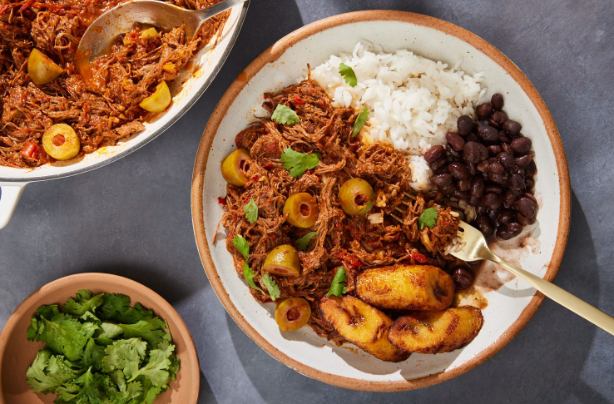Making buns from home can be a delightful and rewarding experience. Whether you’re a seasoned baker or a beginner, preparing your own buns at home allows you to enjoy fresh, soft, and flavorful bread without the hassle of store-bought options. In this guide, we will walk you through the essential steps to bake the perfect buns, including tips, ingredients, and techniques to ensure success every time.
Why Should You Make Buns at Home
Making buns at home offers numerous benefits that store-bought alternatives simply cannot match. Not only can you control the ingredients, ensuring freshness and quality, but homemade buns also allow for creative customization. From sweet rolls to savory buns, the possibilities are endless. Plus, the satisfaction of pulling a warm batch of buns from your oven is unmatched.
Ingredients You’ll Need for Perfect Buns
The key to making buns at home lies in using the right ingredients. Below is a list of basic ingredients that are commonly used in bun recipes:
1. Flour
Flour is the foundation of any bun recipe. For soft and fluffy buns, all-purpose flour works well. However, you can experiment with bread flour for a chewier texture or even whole wheat flour for a healthier twist.
2. Yeast
Yeast is the secret to fluffy buns. It is essential for the dough to rise and develop that soft, airy texture. Active dry yeast or instant yeast can both be used, but instant yeast is more convenient since it does not need to be proofed in water.
3. Sugar
Sugar not only sweetens the buns but also feeds the yeast, helping it grow and rise. You can use granulated sugar, honey, or maple syrup for a unique flavor.
4. Salt
Salt enhances the flavor of the dough and helps balance the sweetness of the buns. Be sure to measure the salt carefully to avoid overpowering the dough.
5. Butter or Oil
Fat, in the form of butter or oil, adds moisture and richness to the buns, making them soft and tender. Butter imparts a rich flavor, while oil keeps the buns soft and light.
6. Milk or Water
Liquid is necessary to bring the dough together. Milk gives the buns a softer texture and richer flavor, while water can be used for a more neutral taste.
Steps to Making Buns From Home
Step 1: Prepare the Dough
Start by combining the dry ingredients. In a large mixing bowl, combine the flour, sugar, salt, and yeast. Mix well to ensure the yeast is evenly distributed. In a separate bowl, heat the milk (or water) and butter until warm but not hot—this helps activate the yeast. Gradually pour the wet ingredients into the dry mixture and stir until a dough forms.
Step 2: Knead the Dough
Turn the dough out onto a floured surface and knead it for about 8-10 minutes. Kneading develops the gluten in the dough, which gives the buns their texture. If the dough feels sticky, sprinkle a little flour, but avoid adding too much. The dough should be smooth, elastic, and slightly tacky.
Step 3: Let the Dough Rise
Once kneaded, place the dough in a lightly greased bowl and cover it with a clean towel or plastic wrap. Let it rise in a warm place for 1 to 1.5 hours, or until it has doubled in size. The yeast will work its magic, causing the dough to expand and become airy.
Step 4: Shape the Buns
After the dough has risen, punch it down to release the air. Turn it out onto a floured surface and divide it into equal portions. Shape each portion into a smooth ball or oval, depending on your preference. Arrange the buns on a baking tray lined with parchment paper, leaving some space between them to allow for further rising.
Step 5: Second Rise
Cover the shaped buns and let them rise for another 30-45 minutes. This second rise ensures that the buns will be soft and fluffy.
Step 6: Bake the Buns
Preheat your oven to 375°F (190°C). Once the buns have risen, place them in the oven and bake for 15-20 minutes, or until they are golden brown on top. You can also brush the tops of the buns with a little melted butter for a glossy finish.
Step 7: Enjoy the Buns
Once baked, remove the buns from the oven and let them cool slightly on a wire rack. Serve warm or at room temperature. These homemade buns are perfect on their own or can be used to make sandwiches, burgers, or served alongside soups and stews.
Tips for Perfect Buns
- Use Room Temperature Ingredients: Make sure your butter, milk, and eggs are at room temperature before using them. This helps the ingredients combine more easily and results in a smoother dough.
- Don’t Rush the Rising Process: Allow the dough to rise fully. Skipping the second rise or not letting it double in size will result in dense buns.
- Brush with Butter: For an extra soft texture and a delicious finish, brush the tops of the buns with melted butter as soon as they come out of the oven.
- Experiment with Flavors: You can add herbs, garlic, cheese, or even dried fruit to your dough to create unique flavored buns.
Conclusion
Making buns from home is a simple yet gratifying process that yields delicious results. With the right ingredients and a little patience, you can create soft, fluffy buns that are perfect for any meal. So, roll up your sleeves and try baking your own buns today—your taste buds will thank you! Happy baking!
FAQs
1. Can I use whole wheat flour instead of all-purpose flour?
Yes, you can substitute whole wheat flour for all-purpose flour, but you may need to adjust the amount of liquid, as whole wheat flour absorbs more moisture. For a lighter texture, try using a combination of both flours.
2. How can I make my buns sweeter?
To add sweetness, you can increase the amount of sugar in the recipe or use honey or maple syrup. Adding a teaspoon of vanilla extract or cinnamon can also enhance the flavor.
3. Can I freeze the dough before baking?
Yes, you can freeze the dough before the second rise. After shaping the buns, place them on a baking sheet, freeze them individually, then store them in an airtight container. When you’re ready to bake, let them thaw and rise before baking.
4. Why are my buns not rising?
If your buns are not rising, it could be due to expired yeast or a cold environment. Make sure your yeast is fresh and the dough is placed in a warm, draft-free area to rise.
5. How do I store leftover buns?
Store leftover buns in an airtight container at room temperature for up to 2-3 days. For longer storage, freeze them in a sealed bag, and thaw them at room temperature when ready to use.




